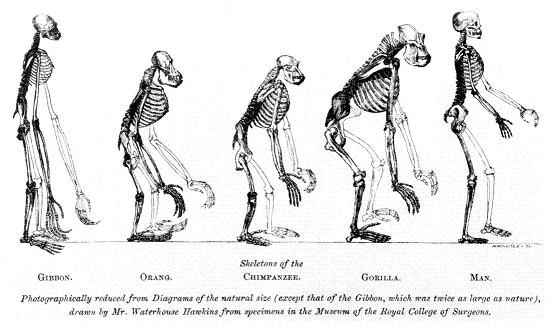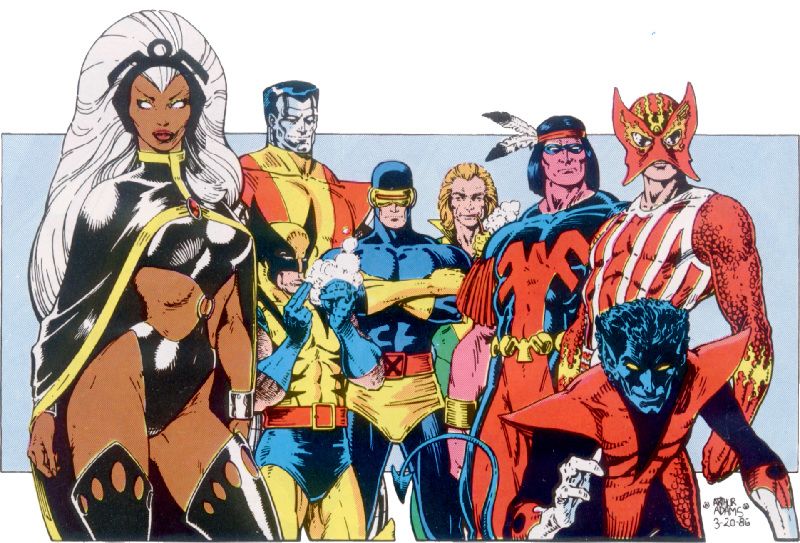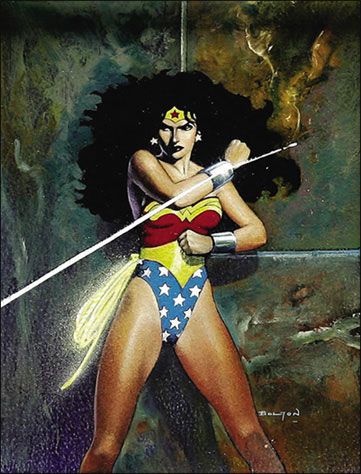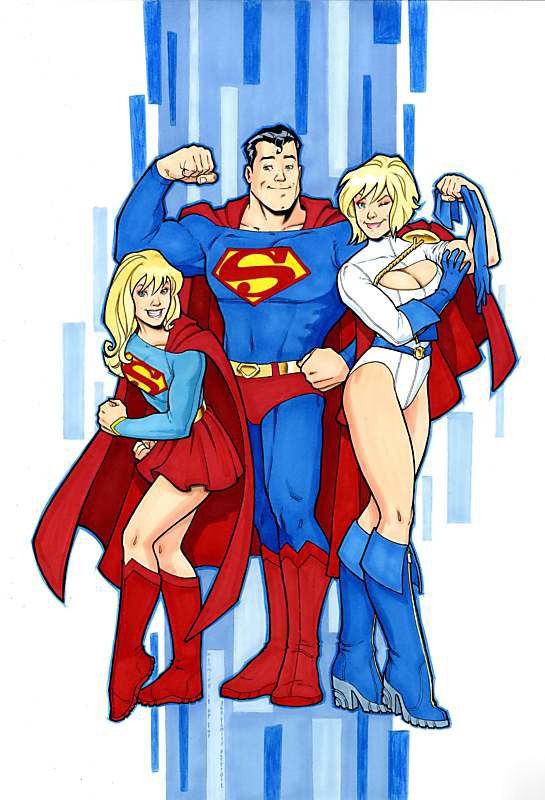Human posture indicates a lot about a person, but comic book superhero posture says just as much about the artist. There is a school of thought, founded by Dr Alexander Lowen (a student of Reich), which posits that emotions are stored in the body. The way we stand, move, and our aches and pains are all be the physical expressions of a repressed emotion. Over time, these stored feelings can become so ingrained in our bodies that they're visible to the naked eye.
Now I'm paraphrasing here, since I lent my copy of Bioenergetics to a friend, but as far as I remember it, the idea is that a person's posture indicates their emotional state. The idea that stuck most clearly in my mind is that a man who holds his chest forward is showing himself to be more aggressive or confrontational, and that a man who instead leads with his pelvis is passive. From a biological standpoint I can see some logic in this, since a man's pelvis contains his genitals, which are relatively exposed and undefended and so sticking them out would make a man rather vulnerable. In terms of leading with his chest, where armored with muscle, it is standard practice to equate this sort of posture with aggression, to the extent that men regularly bump chests at sporting events and other masculine bonding rituals.
According to the same theory, a woman who leads with her chest forward is more vulnerable. In arching her back to protrude her chest and ass, her back curves and her stance is weaker. This can be seen in the way a woman's posture is changed by wearing very high-heeled shoes, it makes her appear more sexually available and less aggressive. Conversely, a woman standing with her pelvis forward, leading with her pelvis and leaning her torso back on it, denotes a more aggressive female stance. Biologically, unlike men, women have reproductive areas which are much better armored by bone and fatty tissue, and so leading with the pelvis first can be said to be more aggressive from that point of view as well.
It's really interesting to look at these ideas in the context of comic book superheroes. These different postures of the sexes are seen over and over again in the stance of superheroes, drawn in radically different ways by artists. I've always found it fascinating to look at the way different artists draw the same character, entirely changing a character and the story they're creating simply by changing the posture of that hero. Some artists will draw every male and female character with similar body-types and similar posture (which I've often thought says more about their own attitude to life than it does depict any of particular character or storyline), while some artist will draw different postures for different characters. There are artists who use their art to show an awareness of how different posture (as well as different physiques) will create a dramatic change in that character's power and mood, and in this way, move a story along with subtle visual cues.
The first artist who's depiction of posture dramatically jumped out at me was Arthur Adams back in the 80's. His stylized drawings of women depicted them arching their back to what would be a painful degree, if they were real. With large breasts throw forward, and round asses protruding, his women aren't just well-endowed, they're standing with an extreme arch in their backs. He creates a sexually available posture for his female characters. His male characters generally have slightly less of a curve to their back's, though they also have their chests strongly forward. This makes sense, these men are superheroes and when they're going up against evil, they're usually meant to be pretty aggressive. While I enjoyed the way he drew, I initially had a hard time swallowing this sex-kitten postures that he gave his female characters. Eventually I came to rationalize it in the following way; Adams is depicting women who won't ever have to be able to defend themselves because they have superpowers. Therefore they are able to lull their foes into a false sense of security by appearing so sexually overt. They gain a sullen power, as if to say "Screw you, I don't have to stand up straight, I've got superpowers."
John Bolton's honest, straightforward characters immediately impressed me, since they are literally that - straight. Their posture is unadorned and erect, they do not need to slouch or arch in order to show their power, they simple present themselves with the healthy posture that they were born with. This simplicity lends his characters an honesty and integrity that perhaps not all characters warrant, but for me, whenever I read his stories, I can't help but trust these heroes. He never draws them with any physical imperfections, no arching backs, or jutting chests. They're super heroes in the clearest sense of the word, perfect physical specimens. There's no posturing in the posture, no need for them to show off anything because they are strong enough to be able to just be in the world. He draws people with a serenity and solidity of stance, their posture shows them to have a confidence and a power that regular humans just can't keep up with. By giving them such serene, erect posture, he reiterates their position as more than human.
Increasingly in the last year Amanda Conner's drawings of women have impressed me. She has an ability to create a very different physical type for different female superheroes, as well showing their dramatically different postures, appropriate to age, power level, and character. It is a breath of fresh air. One of my favorite examples of this has to be her fantastic drawings of Supergirl in Wednesday Comics, who looked younger, smaller, and less developed than I'd previously seen her. Most importantly, she stood straight. No arching back, no busty seduction posture. She suddenly had all of the integrity and forthrightness of a corn fed, middle-America Superman, (as it should be.) Meanwhile Conner's simultaneous take on Power Girl gave us an extremely well-endowed woman, happy to arch her back for a cover shot, but usually too busy throwing her back into a punch to stand up straight. As a super hero, Power Girl's sexually available stance dramatically contradicts her incredibly aggressive attitude. It works because one look at her costume shows us that she's consciously using her secondary sex characteristics to throw off her foes, but more than that, it works because Conner manages to make it look like a pose she's throwing, not her actual posture. There's layers to the character there and it's cleverly done.
These are just three examples of the ways that artists depict super heroic posture in comic books, but it's something I always take note of. Perhaps it's because I grew up learning about things like Alexander Technique and Bioenergetics, or maybe it's just because I have a fine art training so I spent a lot of my youth drawing people, but whatever the reason, I've always enjoyed looking at how superhero posture is depicted, and trying to read the meaning behind it.




